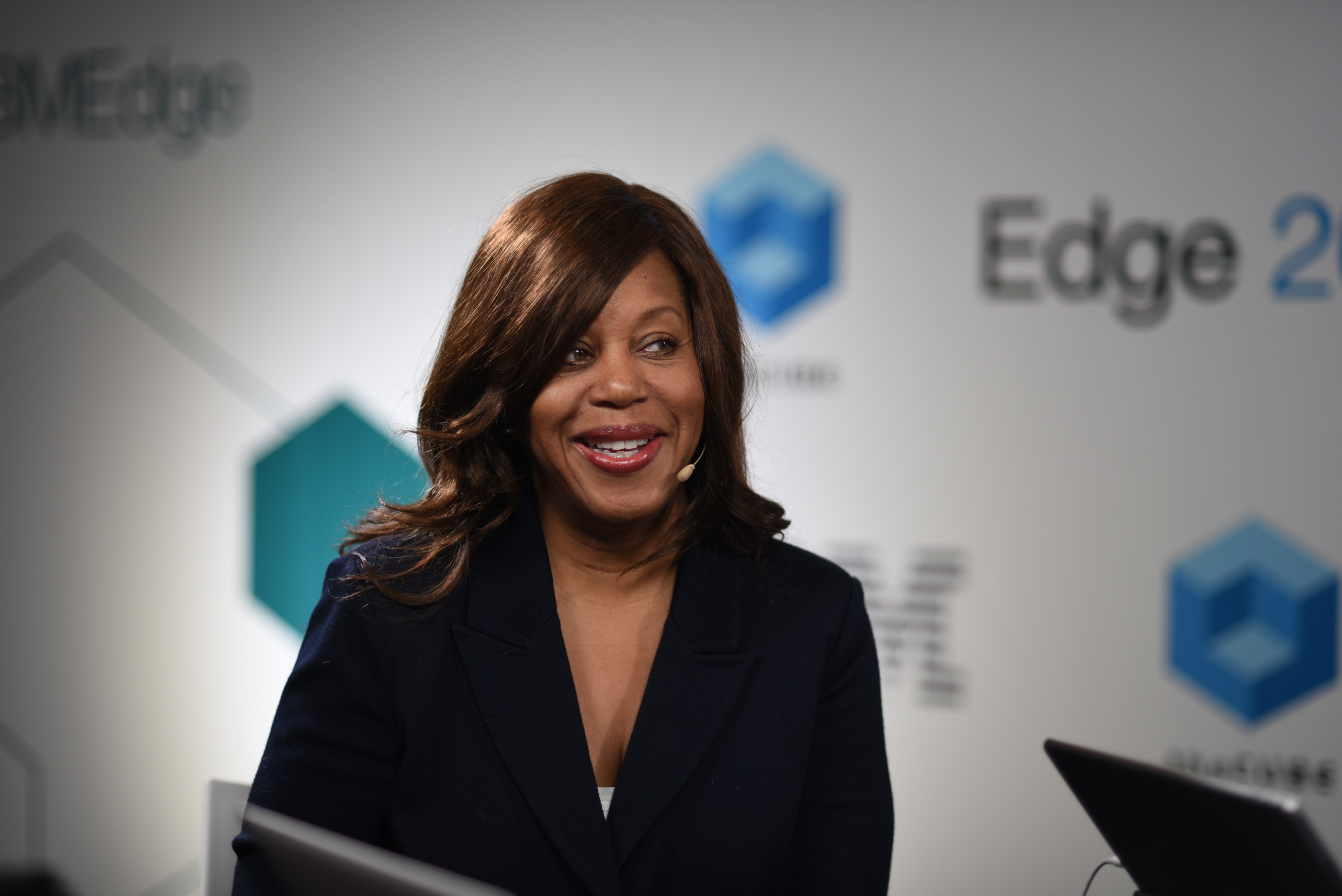 NEWS
NEWS
 NEWS
NEWS
 NEWS
NEWS
In a time when so many influential companies are emerging from relatively small startups, finding initial investors is often a make-or-break moment for fledgling enterprises finding their way through the early hurdles.
During the second day of IBM’s Edge conference this year, Jacqueline Woods, global VP and CMO at IBM, met with Dave Vellante (@dvellante) and Stu Miniman (@stu), cohosts of theCUBE, from the SiliconANGLE Media team, to talk about several aspects of her role in the company and how customers are benefiting from IBM’s financing.
Woods began by giving a rundown of the financing programs IBM was running, how customers were responding to it and how those responses were influencing IBM’s program development. “What we find is that a number of customers are, for example, asking for deferred payments, or they’re really looking for longer payment terms. So we do have a number of offers out there today,” Woods said.
She also offered some insights into the logistics of financing: “Over time, if you finance, you’re going to find that your internal rate of returns, they’re going to be better off if you use financing. … Interest rates are still fairly low, so now’s a very good time to use financing, to leverage it to procure technology. And I think that’s the most important take-away.”
“All clients today, they are asking for longer terms. … With our deferred payment plans, we’re able to give those types of terms that CFOs are actually requesting,” Woods added. “We also do what’s called ‘project financing,’ where we’re looking at ‘when do you expect to get a return on the investment that you’re making?’ … If you can align your payments with your expected returns, it’s very beneficial to you.”
Covering specifics of IBM’s financing throughout the rest of the conversation, Woods explicated the aims and techniques on both sides of the monetary relationship. “We still see a lot of strategic and transformational projects, those are really core. But what we also see are people taking and breaking up their projects into digestible chunks … really understanding ‘what can I consume today, right now,’” Woods explained.
She continued: “I think that’s the number one requirement for everyone today: Can you show early success, which is a proof-point so that you can then begin to leverage that early success to then build the case for you to do further projects inside your organizations.” Woods said.
Beyond these gritty details, she also shared her thoughts on the more abstract side. “When you think about how marketing has transformed, marketing is based on technology today. It is not based on kind of this mystical thing that happens. … It is very specific, it is very technical, it relies heavily on technology in order to execute demand-generation activities.”
In the end, Woods said, “The biggest thing for success for any of these projects is a relationship that you build inside the organization, because it’s those relationships that you have to lean into to be able to get things done.”
Watch the complete video interview below, and be sure to check out more of SiliconANGLE and theCUBE’s coverage of IBM Edge 2016.
Support our mission to keep content open and free by engaging with theCUBE community. Join theCUBE’s Alumni Trust Network, where technology leaders connect, share intelligence and create opportunities.
Founded by tech visionaries John Furrier and Dave Vellante, SiliconANGLE Media has built a dynamic ecosystem of industry-leading digital media brands that reach 15+ million elite tech professionals. Our new proprietary theCUBE AI Video Cloud is breaking ground in audience interaction, leveraging theCUBEai.com neural network to help technology companies make data-driven decisions and stay at the forefront of industry conversations.